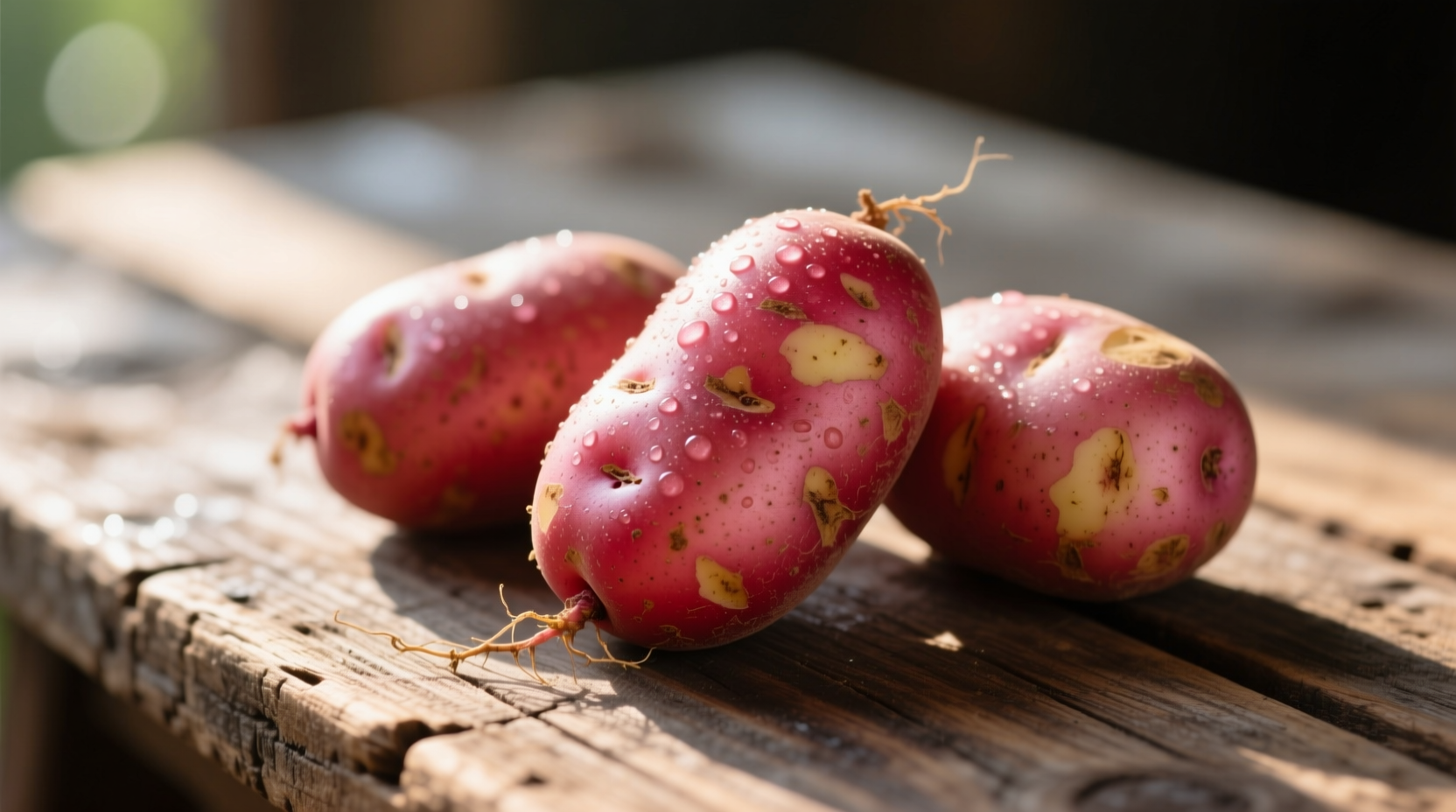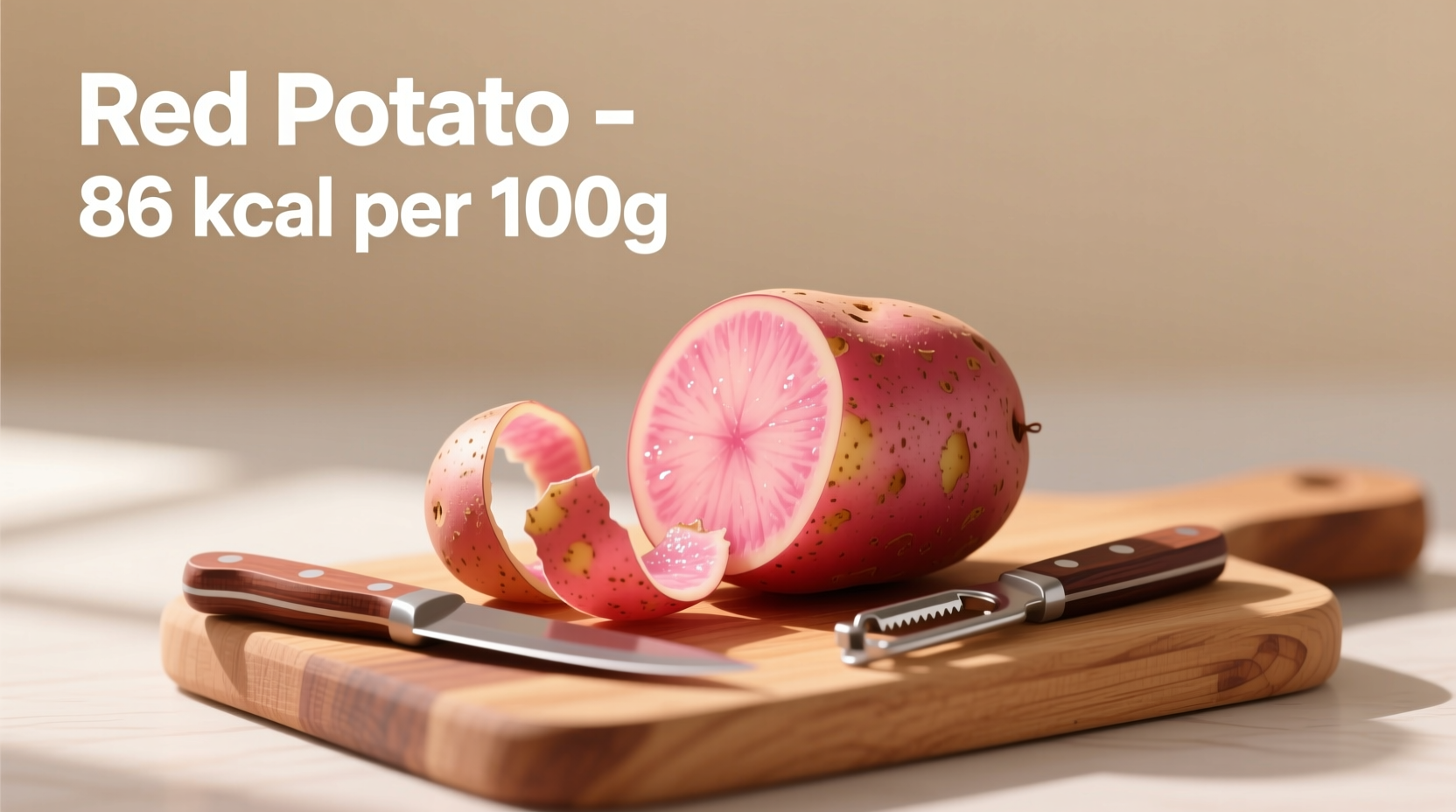Discover exactly how red potato calories fit into your nutrition goals with this comprehensive guide. Whether you're tracking macros, managing weight, or simply curious about this versatile vegetable, you'll get precise calorie information, preparation insights, and practical usage tips backed by authoritative nutritional data.
Understanding Red Potato Nutrition Basics
Red potatoes offer a balanced nutritional profile that makes them a smart choice for health-conscious eaters. According to the USDA FoodData Central database, the standard nutritional breakdown per 100g of raw red potatoes includes:
| Nutrient | Amount per 100g | % Daily Value* |
|---|---|---|
| Calories | 70 kcal | 3.5% |
| Total Carbohydrates | 16g | 5.3% |
| Dietary Fiber | 2.2g | 7.8% |
| Protein | 2.0g | 4.0% |
| Vitamin C | 19.7mg | 22% |
| Potassium | 421mg | 9% |
*Based on a 2,000 calorie diet. Source: USDA FoodData Central
These small but mighty tubers deliver substantial nutritional value without excessive calories. The naturally occurring fiber helps with satiety, while the vitamin C content supports immune function—making red potatoes far more than just a carbohydrate source.
How Preparation Methods Affect Red Potato Calories
One of the most common misconceptions about potatoes is that cooking method dramatically changes their calorie content. The reality is more nuanced:
- Boiled red potatoes (150g): 105 calories - Water absorption slightly increases weight but doesn't add calories
- Baked red potatoes (150g): 110 calories - Minimal moisture loss preserves calorie density
- Steamed red potatoes (150g): 105 calories - Similar to boiling with minimal nutrient loss
- Fried red potatoes (150g): 190-250 calories - Significant increase due to oil absorption
- Air-fried red potatoes (150g): 120-130 calories - Minimal oil needed maintains lower calorie count
The key factor isn't the cooking method itself but whether you add fats during preparation. As Antonio Rodriguez explains, "The potato's natural calorie content remains stable through most dry-heat cooking methods. The real variable comes from what you add—oil, butter, or other high-calorie toppings that can triple the final dish's energy content."

Red Potatoes Compared to Other Varieties
When evaluating red potato calories against other common varieties, the differences are smaller than many assume. The table below shows calorie content for equivalent raw weights:
| Potato Variety | Calories per 100g | Notable Nutritional Differences |
|---|---|---|
| Red Potatoes | 70 | Higher vitamin C, slightly more fiber |
| Russet Potatoes | 79 | Higher in potassium, more starch |
| Sweet Potatoes | 86 | Significantly higher in vitamin A |
| Yukon Gold | 77 | Higher natural sugars, buttery texture |
Source: USDA FoodData Central
While sweet potatoes contain more calories per 100g, they also deliver dramatically higher vitamin A content. Red potatoes, however, maintain an excellent balance of nutrients with slightly lower calorie density than russets. This makes them particularly valuable for those seeking nutrient diversity without excessive caloric intake.
Practical Portion Guidance for Different Dietary Goals
Understanding appropriate portion sizes helps incorporate red potatoes into various eating plans:
- Weight management: One medium red potato (150g) provides sustained energy without excessive calories. Pair with lean protein and non-starchy vegetables for balanced meals.
- Active lifestyles: Two medium red potatoes (300g) offer 210 calories of complex carbohydrates ideal for pre- or post-workout fueling.
- Low-carb approaches: Limit to half a medium potato (75g) for approximately 50 calories and 12g carbohydrates while still gaining nutritional benefits.
Nutrition researchers at Harvard T.H. Chan School of Public Health note that whole, unprocessed potatoes like red varieties have a lower glycemic index than processed potato products, making them a better choice for blood sugar management when prepared without added fats (source).
Maximizing Nutritional Value: Smart Preparation Tips
You can enhance the nutritional profile of red potatoes through simple preparation techniques:
- Cook with skin on: The thin skin contains nearly half the fiber and significant nutrients. Simply scrub thoroughly before cooking.
- Cool before eating: Allowing cooked potatoes to cool develops resistant starch, which functions like fiber and may improve gut health.
- Pair with healthy fats: Combining with olive oil or avocado enhances absorption of fat-soluble vitamins without excessive calories.
- Avoid excessive processing: Mashing or ricing increases glycemic impact compared to keeping potatoes in larger chunks.
These preparation methods preserve the natural nutritional advantages of red potatoes while keeping calorie counts predictable and manageable for various dietary approaches.
Addressing Common Red Potato Calorie Myths
Several misconceptions persist about potato nutrition that deserve clarification:
- Myth: All potatoes are high-calorie foods that cause weight gain
Reality: At 70 calories per 100g, red potatoes have similar calorie density to many fruits and vegetables. Weight impact depends on preparation and portion size. - Myth: Potatoes lack significant nutritional value
Reality: Red potatoes provide vitamin C, potassium, and fiber—nutrients many Americans lack in sufficient quantities. - Myth: Sweet potatoes are always healthier than red potatoes
Reality: Both offer unique nutritional profiles. Red potatoes provide more vitamin C while sweet potatoes excel in vitamin A.
Registered dietitians increasingly recognize the value of including potatoes like red varieties in balanced diets. The Academy of Nutrition and Dietetics emphasizes that whole food carbohydrates from sources like potatoes provide essential energy and nutrients when consumed as part of varied eating patterns (source).
Historical Context of Potato Consumption
Potatoes have evolved from staple food to nutritional controversy and back again. Understanding this timeline provides valuable context:
- 16th century: Potatoes introduced to Europe from South America, initially met with suspicion
- 18th-19th centuries: Became dietary staple across Europe, preventing famine in many regions
- Mid-20th century: Recognized as valuable source of carbohydrates and vitamins
- 1980s-2000s: Low-carb diet trends led to potatoes being unfairly demonized
- Present day: Nutrition science recognizes the value of whole-food carbohydrate sources like red potatoes in balanced diets
This historical perspective shows how nutritional understanding evolves, with current research supporting potatoes as part of healthy eating patterns when prepared appropriately.











 浙公网安备
33010002000092号
浙公网安备
33010002000092号 浙B2-20120091-4
浙B2-20120091-4